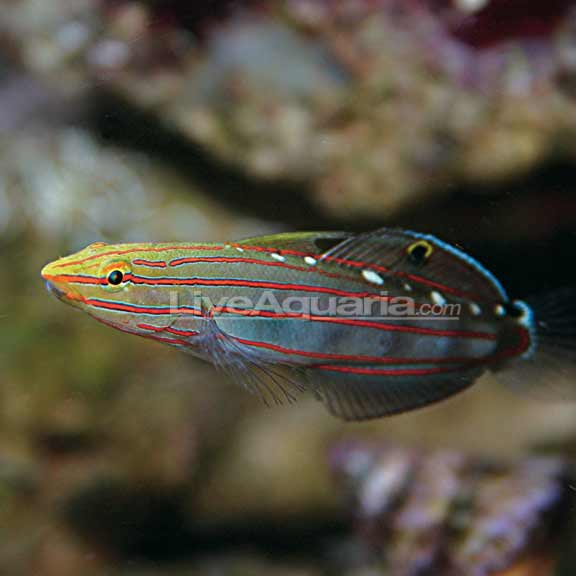 Sand-sifting Gobies are a favorite among many aquarists…..but are they compatible with your system?
Sand-sifting Gobies are a favorite among many aquarists…..but are they compatible with your system?
When first setting up a fish-only or reef aquarium you need to consider whether you will have a sand bed or a bare bottom tank. There are many important considerations to be made in this decision which we will discuss in another article in the near future. However, if after careful consideration you decide that you will opt for a sand bed, then sand-sifter Gobies may be a great complement to your aquarium.
Sand-sifter Gobies are generally hardy and normally quite peaceful fish in the aquarium. They mainly feed on small invertebrates which live in the sand bed but often they will adapt to eating fish foods in order to supplement their diet. When sifting, these Gobies scoop up mouthfuls of sand and filter out what’s edible from what’s not. The sand and remaining non-organic material is then discarded back to the bottom of the aquarium through the gill slits. Through this feeding process, these Gobies help to keep the top layer of sand clean.
When purchasing a sand-sifting Goby for your aquarium there are some things to consider. First, how long has you tank been established with a sand bed? If the aquarium has only been setup for a short time then the sand bed may not have sufficient invertebrate populations to sustain your Goby’s eating demands. One option for augmenting invertebrate populations in your sand bed is to seek out another local aquarist or fish store that would be willing to let you have or sell you a few scoops of their sand. A second consideration would be to purchase a Goby which has already adapted to eating fish foods as a dietary supplement. In every case, always be sure to determine the eating habits of the particular sand-sifting Goby before you make the purchase.
The size of your aquarium will also play a part in your purchase decision. Species such as the Banded Goby (Amblygobius phalaena) may attain 6 to 7 inches in overall length. These fish will require more sustenance than smaller Gobies requiring a larger aquarium with an adequately sized sand bed.
Things to watch out for: A small Goby in an aquarium could become an expensive meal for a predatory fish or jump out of your tank and end up napping on the carpet. Keep this in mind when selecting fish for your aquarium. Fish compatibility is key with any aquarium and keeping a docile Goby with more aggressive fish is not recommended. Sand-sifting Gobies normally stay close to the sand but when spooked they can and will leap upward and sometimes out of the water and onto the floor. Even when aggressive fish are not present a Goby may decide to jump out of your tank. We recommend keeping a glass or mesh top over the aquarium.
Sand Sifting Gobies:
- Yellowhead, Goldhead, Bluestreak Sleeper Goby (Valenciennea strigata)
- Banded, Brownbarred, Bullet Sleeper Goby (Amblygobius phalaena)
- Orange Spotted, Diamond Sleeper Goby (Valenciennea puellaris)
- Twinspot Signal Goby (Signigobius biocellatus)
- Rainford’s Goby / Court Jester (Koumansetta rainfordi)
- Sleeper Blue Dot Goby (Valenciennea sexguttata)
- Sleeper Green Banded Goby (Valenciennea randalli)
- Bluefin Watchman Goby (Cryptocentrus fasciatus)
- Decorated Goby (Istigobius decoratus)
- Bella Goby (Valenciennea bella)
The above list is by no means comprehensive and some of them are actually quite rare in the aquarium trade. In our next article we will cover each of these fish in greater depth to help guide you towards an informed Goby acquisition.






